Animals
Windsurfing Swans
In the latest issue of The Wilson Journal of Ornithology, Olle Terenius of the Swedish University of Agricultural Sciences reports observing swans windsurfing (i.e. "using tailwind as a support for high-speed water transportation"). This is something that bird experts were apparently unaware that swans could do.Terenius hopes to spread awareness of the phenomenon of windsurfing swans, although he notes that the general public may have been more aware that swans can do this than bird experts were. He says, "I think the reason that this is missing in the literature is that ornithologists who are out in the field only quickly note that they see a Mute swan and write it down on the list of bird observations, while the general public has observed windsurfing swans thinking that this is already a well-known phenomenon." (Science Daily)
Below are his field observations of windsurfing swans.
Posted By: Alex - Sat Oct 22, 2016 -
Comments (1)
Category: Animals, Sports
Earrings on a deer
Bettie Phillips' fifteen minutes of fame involved her decision to put earrings on a baby deer. It happened back in 1997 when she found a two-month-old deer stranded by the side of a road and "thought it would be pretty" if it had earrings. So she pierced its ears by hand, pushing the posts of two earrings through its ears.Police later found the deer in her truck and charged her with animal cruelty.
The charge was eventually suspended, but she had to pay the $250 veterinary bill for treating its infected ears.

San Bernardino County Sun - July 11, 1997

Asheville Citizen Times - Sep 17, 1997

Galveston Daily News - Nov 20. 1997
Posted By: Alex - Sun Oct 09, 2016 -
Comments (3)
Category: Animals, Jewelry, 1990s
The Goat Lymph Cure

Original ad here.
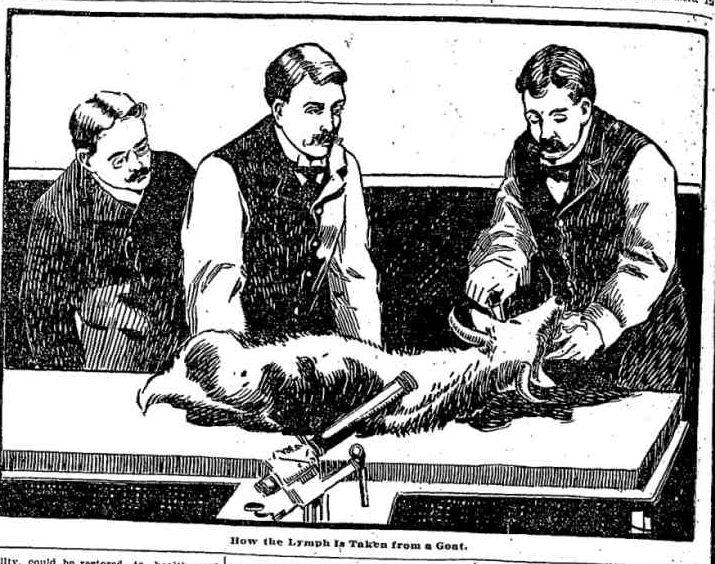

Posted By: Paul - Wed Oct 05, 2016 -
Comments (3)
Category: Animals, Health, Patent Medicines, Nostrums and Snake Oil, Body Fluids, 1900s
Reaction of lions to a man in a motorized cage

I'm not quite sure what's going on here. This photo (sourced to AP Wirephoto) ran in various papers (such as here) on June 26, 1963. It had the following caption:
And that's it. I've been unable to find out anything else about this strange experiment. But I'd like to know why exactly the zoo was curious about how lions would react to a guy driving around in a motorized cage?
Posted By: Alex - Tue Sep 13, 2016 -
Comments (5)
Category: Animals, Experiments, 1960s
Hindu Ceremonial Animal Marriages
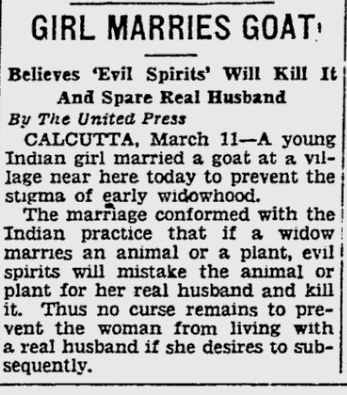
1932 report here.
The practice of having a human marry an animal for various mystical reasons has been a part of Hindu religion for who-knows-how-long, and continues to the present.

Full article here.
And then of course there is marrying a tree as well.
Posted By: Paul - Sat Sep 10, 2016 -
Comments (5)
Category: Animals, Anthropomorphism, Religion, Husbands, Wives, 1930s, Asia
Turtle Clapping
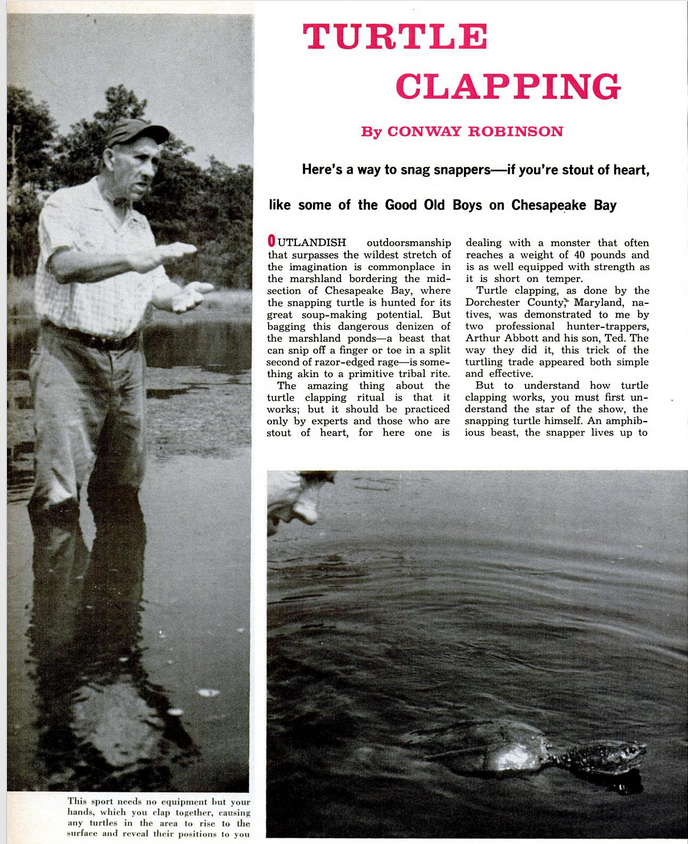

The only source that I can find for this supposedly ancient and semi-legendary practice is a single article in FIELD AND STREAM.
Was the reporter getting his leg pulled? Did the practice exist, then die off? Inquiring minds want to know!
Posted By: Paul - Mon Aug 29, 2016 -
Comments (3)
Category: Animals, Regionalism, 1960s
Adolph Heilborn’s Theories on Women
I can learn little personally about Adolf Heilborn (1873-1941). But his book THE OPPOSITE SEXES caused a bit of a stir when it appeared in 1927, given that he described the female human as the missing link between ape and male human. Naturally, there was, um, a little pushback.

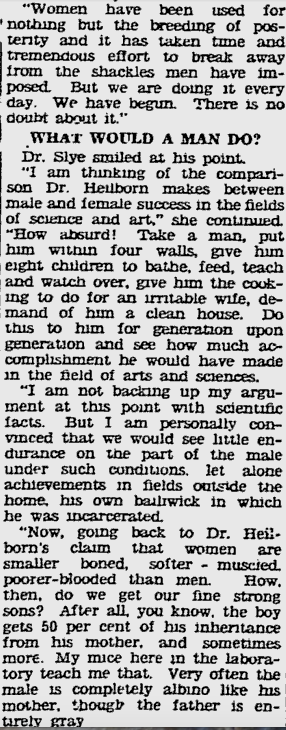

Original article here.
Here is the bio of his opponent.
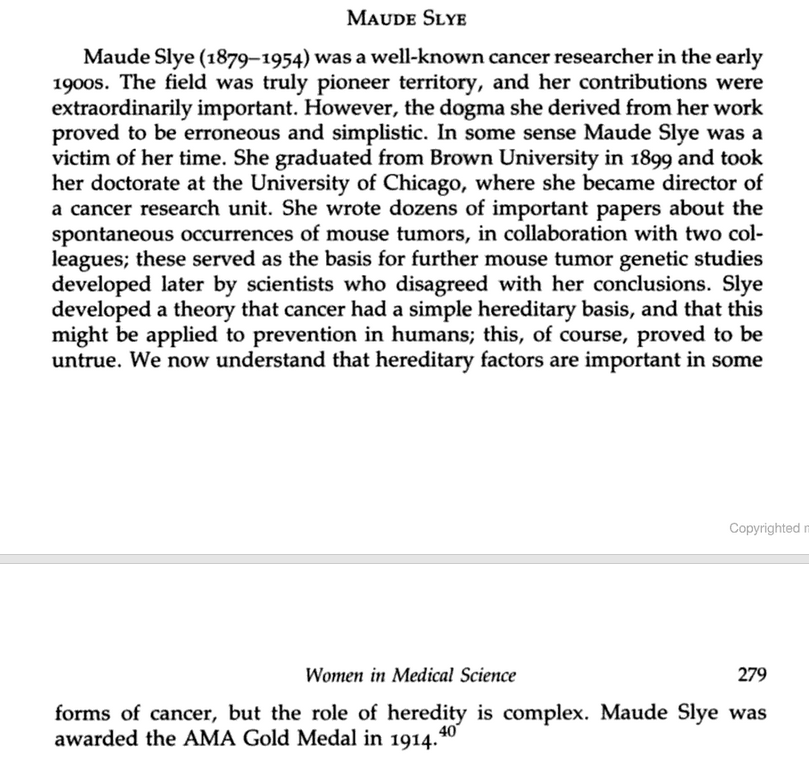
But maybe it was all a joke! If this bookplate belongs to the same fellow, we can see he had a sense of humor.
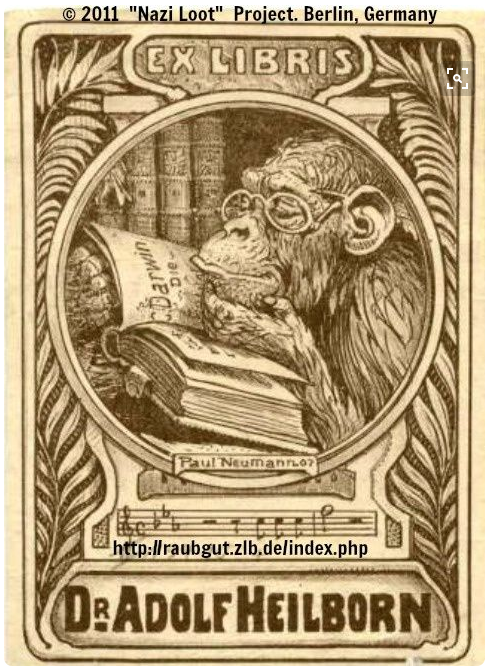
Posted By: Paul - Fri Aug 26, 2016 -
Comments (7)
Category: Animals, Eccentrics, Feminism, Forgotten Figures and Where Are They Now?, Science, Anthropology, Stereotypes and Cliches, 1920s, Men, Women
Cow Triplets
Cows are a definite WU theme. But in all these years, I do not believe we have ever commented on the rare instance of triplet calves. The odds of a successful gestation and delivery are "one in eight million."
Yet there was such a birth in April of 2016. And here was another from 1972.
Of course, with 1.5 billion cattle (half male? fewer than half male?) as of 2013, that could still be a lot of triplets per year.
Posted By: Paul - Mon Aug 22, 2016 -
Comments (2)
Category: Animals, Babies, Natural Wonders
Da-Dum… Da-Dum… Da-Dum

Researchers at UC San Diego (my grad school alma mater) have published research documenting that the "ominous background music that often accompanies shark footage" can cause people to view sharks in a negative light, whereas the same footage set to "uplifting background music" doesn't have this effect.
They note that their study is the first "to demonstrate empirically that the connotative attributes of background music accompanying shark footage affect viewers’ attitudes toward sharks."
Posted By: Alex - Wed Aug 17, 2016 -
Comments (4)
Category: Animals, Fish, Documentaries
Alligators Climb Trees!

Gators can climb trees, who knew?!?
Posted By: Alex - Sun Aug 14, 2016 -
Comments (3)
Category: Animals, More Things To Worry About

| Who We Are |
|---|
| Alex Boese Alex is the creator and curator of the Museum of Hoaxes. He's also the author of various weird, non-fiction, science-themed books such as Elephants on Acid and Psychedelic Apes. Paul Di Filippo Paul has been paid to put weird ideas into fictional form for over thirty years, in his career as a noted science fiction writer. He has recently begun blogging on many curious topics with three fellow writers at The Inferior 4+1. Contact Us |




